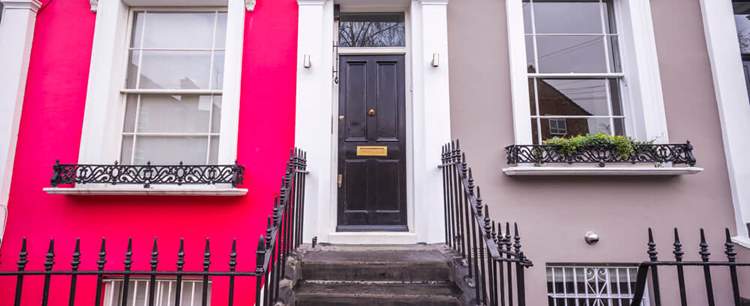In the private rental sector, Houses in Multiple Occupation (HMOs) occupy a special part of the market, which is increasingly attractive to landlords.
Medway Property News, for example, has produced figures suggesting that rental yields for HMOs considerably outstrip those for regular buy to let properties – 9.7% against 5.6% in the examples cited by the publication.
If you own an HMO as a limited liability company, unlike an unincorporated private landlord, you also benefit from tax relief on mortgage interest payments.
So, what is involved in setting up an HMO?
What is an HMO?
If you are setting one up, clearly you need to know what distinguishes a House in Multiple Occupation from other types of let property.
In our product page for HMO insurance – one of the essentials for protecting your investment in such a property – we provide a definition. Essentially, it is let property which has at least three tenants living in it, but forming more than one household, with some or all of the tenants sharing facilities, such as kitchen and bathroom and toilet.
Where is the best place for an HMO?
HMO’s may be more commonly found in areas with local universities (to accommodate students), or close to large cities (for commuting professionals). Knowing where to invest will be influenced by a number of factors relating to your own personal circumstances such as:
- your budget;
- whether you will be managing the property (if you are, it needs to be close to your own home) or will be leaving it in the hands of managing agents;
- your target audience.
Plus, external factors such as:
- the yield you can expect;
- the demand and supply of HMOs in the area; and,
- the competition.
Seeking professional help and advice as well as doing your research may help you pinpoint the best place to invest in an HMO.
But it’s not just about finding the property itself – there is legislation you need to be aware of when setting up and running an HMO that you must be able to comply with.
Complying with the new rules
Setting up an HMO means complying with new legislation, which came into effect on the 1st of October 2018, the main elements of which are also described in our Knowledge Base on the subject in an article dated the 22nd of August 2018.
One of the main things to take into account when setting up an HMO, therefore, is the need to secure a licence to operate the let premises. You must apply to your local council for the licence, which lasts five years, and although each local authority has its own requirements, must meet certain standards relating to:
- the overall size of the property and the number of tenants you intend to house;
- compliance with gas safety and electrical installation certificates, and the installation of smoke alarms and CO2 detectors; and
- that you are a “fit and proper person” to act as landlord of an HMO.
Room sizes
Councils pay particular attention to the size of rooms used for sleeping:
- any bedroom used by an adult or child over the age of 10 must measure a minimum 6.51 square metres – and, if there are two such individuals sleeping in the bedroom, it must measure no less than 10.22 square metres;
- any bedroom used by a child under the age of 10 must be no smaller than 4.64 square metres;
- with the local authority stipulating the maximum number of people who can occupy any room and ensuring that the total number of occupiable rooms is no less than the number of people living in the licensed HMO.
“Fit and proper person”
Before granting a licence, the local authority determines whether you are a fit and proper person to act as the landlord of an HMO by checking your criminal record and ensuring that you have no previous breaches of landlord legislation or codes of practice.
A story in the Guardian newspaper on the 23rd of October 2018, for instance, claimed that there are an estimated 600 individuals whose records might bar them from becoming landlords of HMOs.







